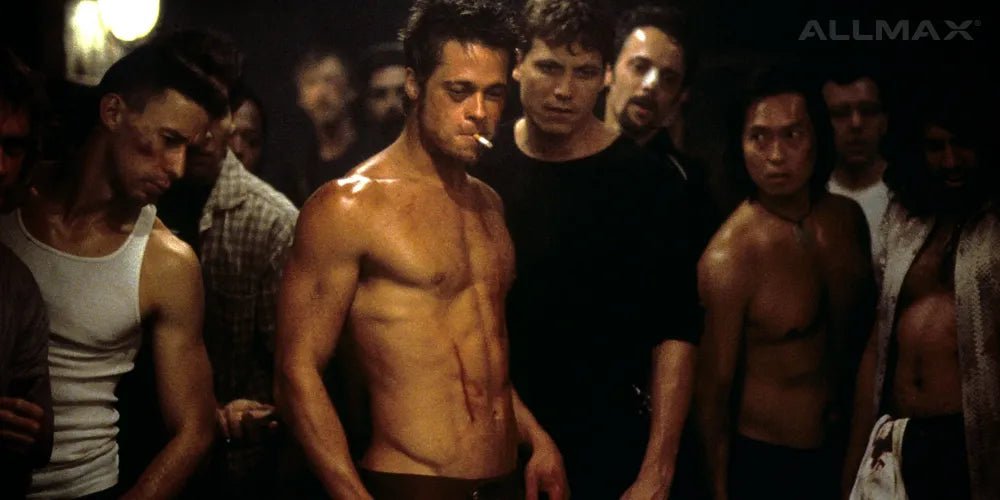Proper Form, Variations, and Tips
Performing the same arm routine over and over again will only take any lifter so far. After a while, those newbie gains will stop coming and frustration will quickly take their place. Building huge biceps takes a multidimensional approach to arm-day: Successful arm training is all about variety.
Hammering out the same bicep curls at the same tempo will eventually cause the biceps to grow complacent. If you’re looking to take your biceps to the next stage of development then you’re going to need some new tools in your arsenal. Reverse curls and the Zottman curl are exactly what you need if you’re looking for arms like Steve Kuclo. In this article, we’re going to take a look at both these curls and several variations to help you break through those plateaus on your way to 18-inch biceps and beyond!
The Reverse Bicep Curl
The standing barbell bicep curl is the bread and butter of every arm-workout, and we’re not for a second saying it isn’t worthy of its place on the throne of bicep exercises. But, the reverse bicep curl is not to be ignored. It’s practically the same exercise apart from the fact that your grip is over (instead of under) the barHow to Perform a Reverse Bicep Curl
Reverse bicep curls can either be performed with a straight Olympic bar or with an EZ curl bar.- Grab the bar with your hands on top of the bar (pronated grip). If you’re using an EZ curl bar then grab the downward sloping sections close to the middle so that your thumb and forefinger are pointing upwards and inwards.
- Keep your elbows tucked into your sides and your knees slightly bent throughout the curl.
- Grip the bar tightly, focusing on squeezing the bar as hard as you can, and curl the bar like you would with a normal bicep curl.
- As you come up you should start to feel the tension in your forearms.
- Hold the curl at the highest point for 1-2 seconds and then slowly the bar.
- Brachialis – The brachialis is responsible for initiating any curling movement. But because of the reverse grip, it plays a much bigger role in the reverse curl. It’s located underneath the main bicep, so it’s not a particularly visual muscle. However, it pushes your bicep up increasing your overall arm size.
- Brachioradialis – the brachioradialis is the upper main muscle of the forearm. It works with the bicep to flex the elbow. When it’s well developed it props up the bicep the overall arm appears larger. It also plays an important role in grip strength.
Tips for Performing the Reverse Bicep Curl
When it comes to performing the reverse bicep curl there are several tips and tricks that can help to get the most out of the exercise. Here’s what you need to know.Go Light!
When first trying the reverse bicep curl it might be tempting to put as much weight on the bar as you would for a regular bicep curl, but this is destined for failure. It’s recommended that you start with half the weight you’d use to perform 8 reps with a regular bicep curl. You can increase the weight after, but it’s important to get used to the form first before loading up.Use a False Grip
One of the biggest mistakes people make when performing the reverse bicep curl is wrapping their thumb around the bar. It won’t completely erase all the merits of the exercise, but it will take away some of the focus from having to use your grip. Using a false grip means you’ll have to grip harder and work the forearms more.Fat Bar, Stronger Grip
If you want to train your grip and build massive forearms then use a fat bar or fat grips so you need to squeeze the bar throughout the exercise. This will test your grip strength and burn those forearms.Flex Your Wrists
Allowing your wrists to drop throughout the exercise is a big NO. You’ll lose a lot of muscle activation and put unnecessary stress on your wrist joints. Keep your wrists straight throughout the curl and extend them backward slightly at the top of the movement to increase tension.Back Against the Wall
It’s easy to get into the habit of cheating reps by using your legs and back to help get the bar up. If you’re trying to push through failure then this is a great way to knock out some extra reps when your form starts to break down. However, it’s going to take away the work from the arms. To eradicate any unwanted assistance, perform the exercise with your back against a wall.Chalk Up
Reverse bicep curls work the grip, especially if you’ve already got sweaty hands. If you’re using the false grip mentioned above then be sure to chalk your hands between every set.The Ultimate Bicep Superset
If you want to use the reverse bicep curl as part of a superset to pump your arms up to the max then superset them with regular bicep curls. Simply rep the reverse bicep curl until failure and then set the bar down and pick it back up with a regular grip and perform regular bicep curls until failure.The Zottman Curl
The Zottman Curl allows you to curl the amount of weight you’d normally use with a standard dumbbell bicep curl and then overload the forearms on the negative phase of the movement by reversing your grip. Here’s how to do them:- Grab a pair of dumbbells with a false grip.
- Start with a regular grip with your palms facing up.
- Flex your bicep and curl upwards like a normal dumbbell curl.
- Once your arm is fully contracted, flex for 1-2-seconds.
- Then rotate your wrist and forearm so that you’re palms are facing down.
- Slowly lower the weight into a full stretch through your biceps and forearms.
Zottman Curl Tips
The tips to get the best out of the zottman curl aren’t too dissimilar to the reverse bicep curl.- Put your back against a wall to rule out unwanted assistance
- Use fat grips to blast your forearms and develop superhuman grip strength
- Keep your elbows tucked into your side
- If you can’t perform Zottman curls bilaterally then just do one arm at a time.
- Superset Zottman curls with regular bicep curls or hammer curls.
FAQ:
Have questions? Here are the answers you need.How Should I Work Reverse Bicep Curls and Zottman Curls Into My Arm Workout?
Working the reverse bicep curl or Zottman curl into your arm workout is simple. Just add them in with your favorite arm exercises. If you’re looking to build size then keep to 3-4 sets of 8-12 reps. Take a 1-2 minute rest between each set to make sure you give yourself adequate recovery time to get the most out of the next set. A great workout to blast your biceps:- Chin-Ups: 4 sets to near failure
- Reverse Bicep Curls: 4 sets of 10-12 reps
- Standard Barbell Biceps Curl: 4 sets of 8-10 reps
- Zottman Curls: 5 sets of 10-12 reps
- Alternative Dumbbell Bicep Curls: 3 sets to failure



